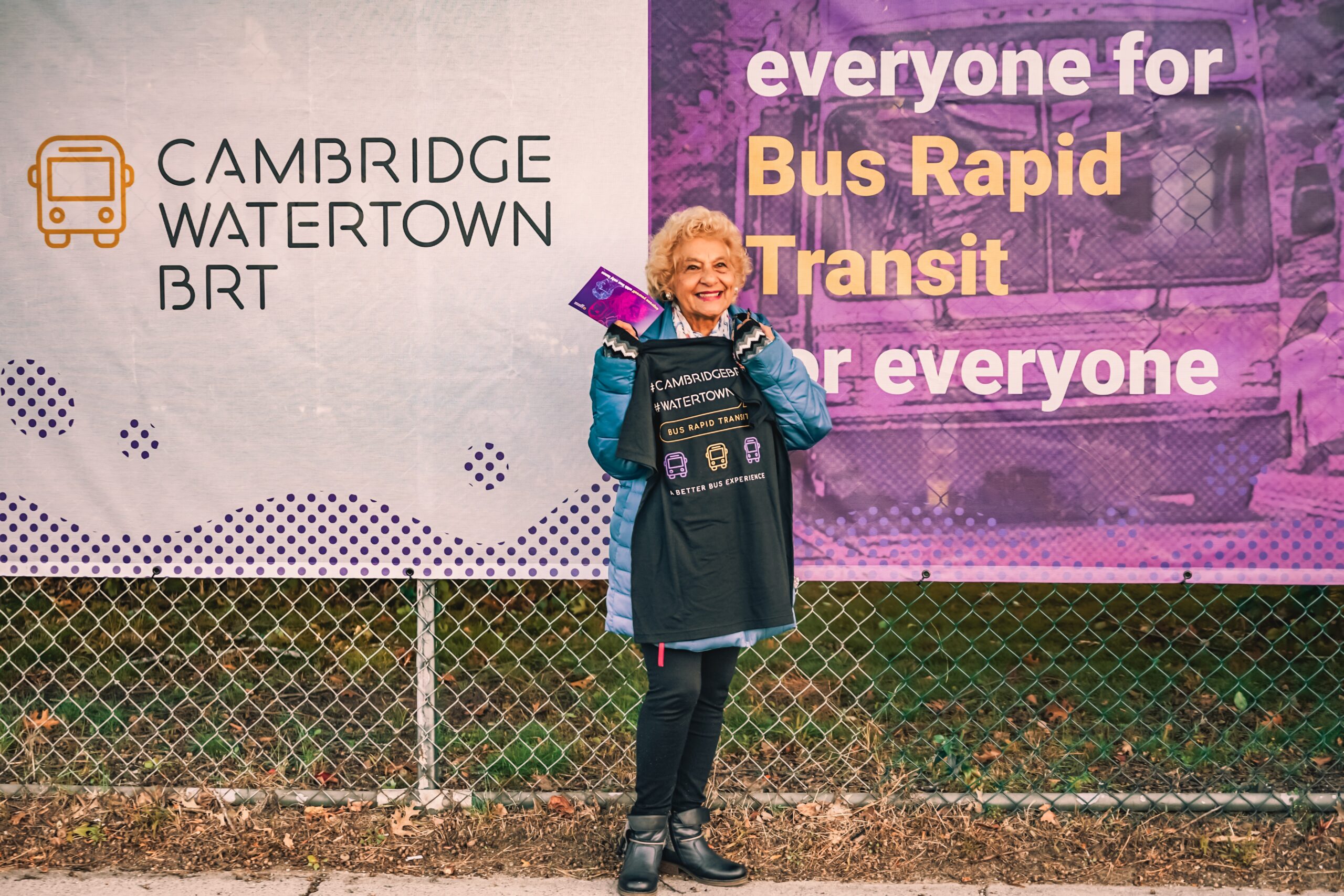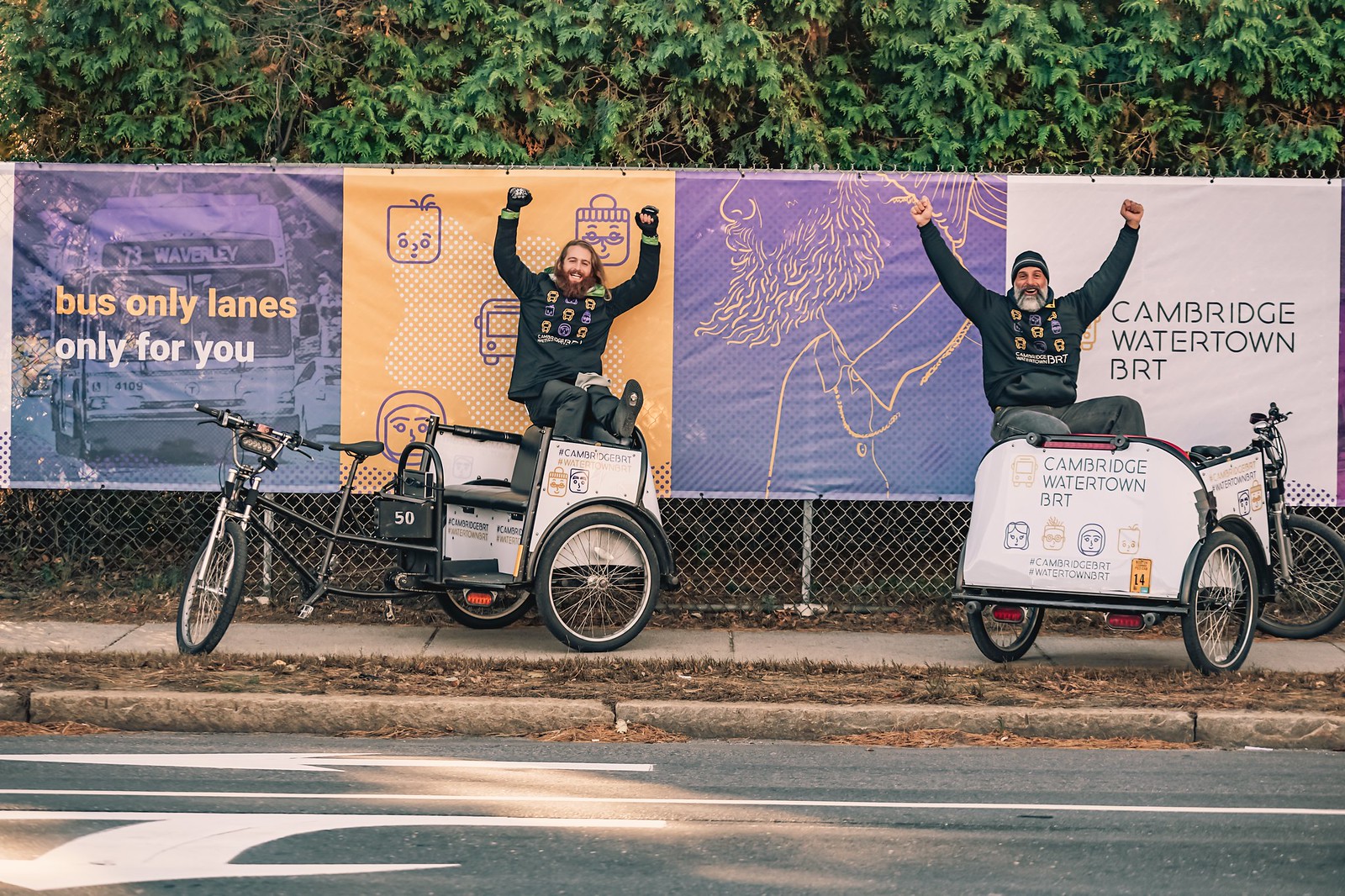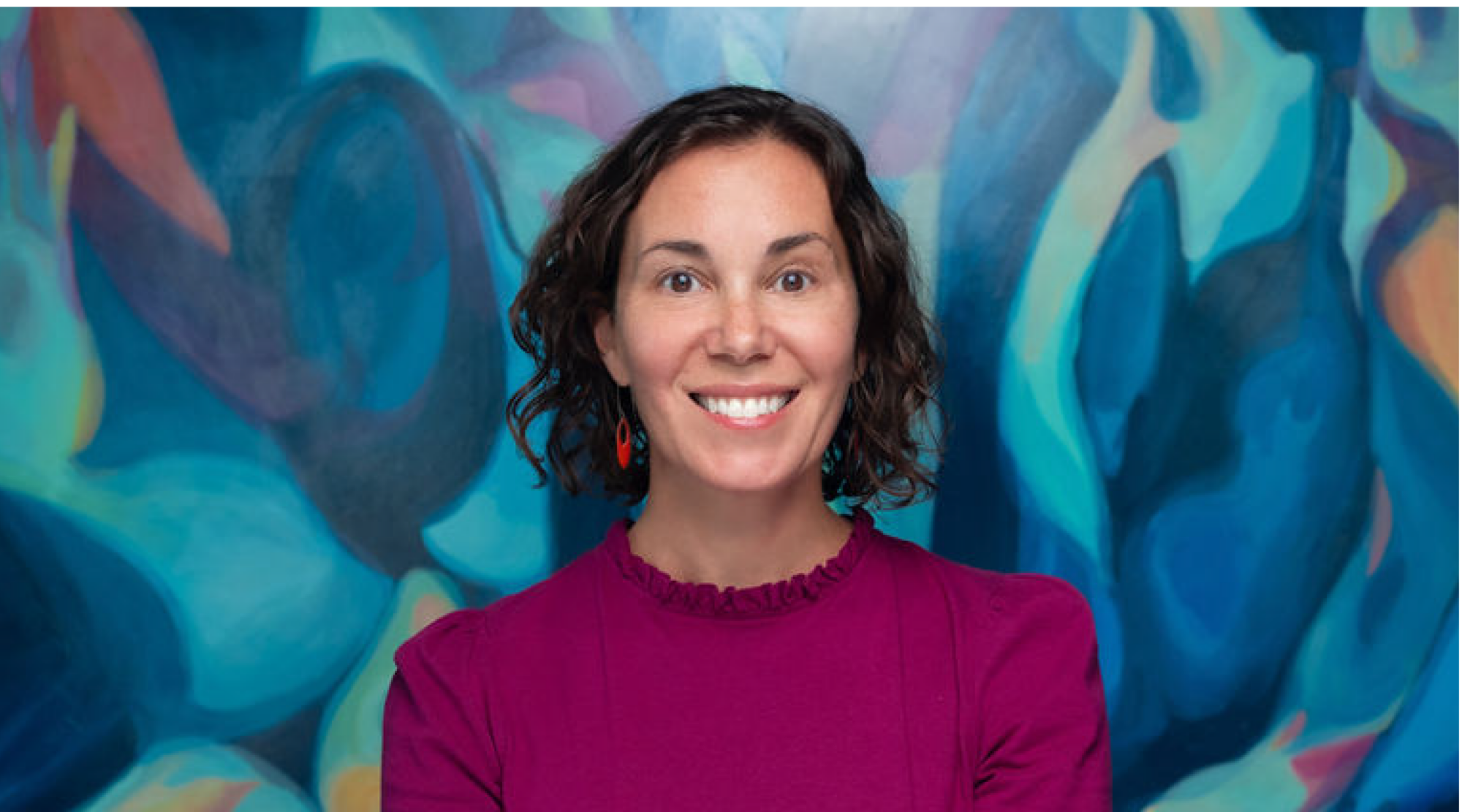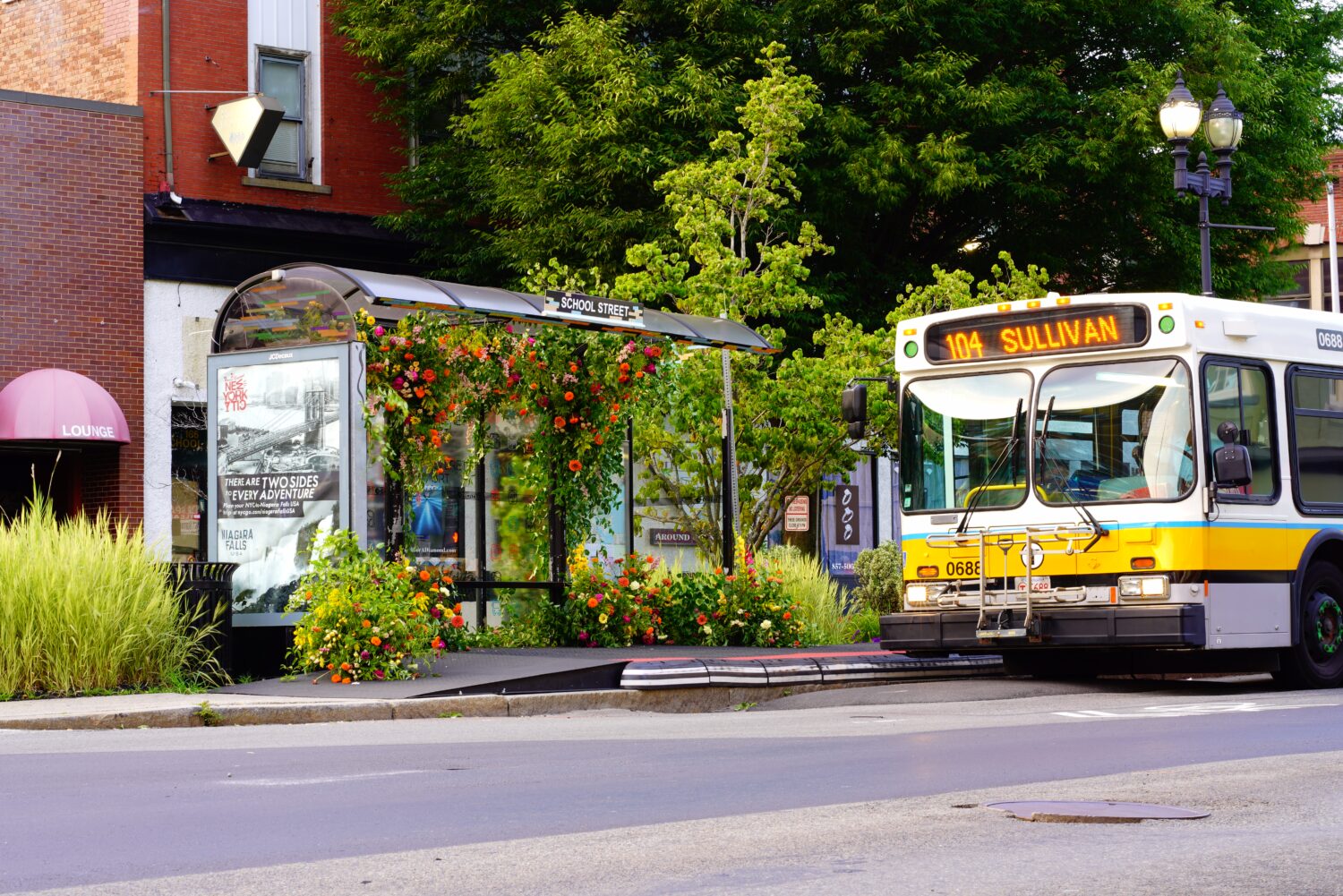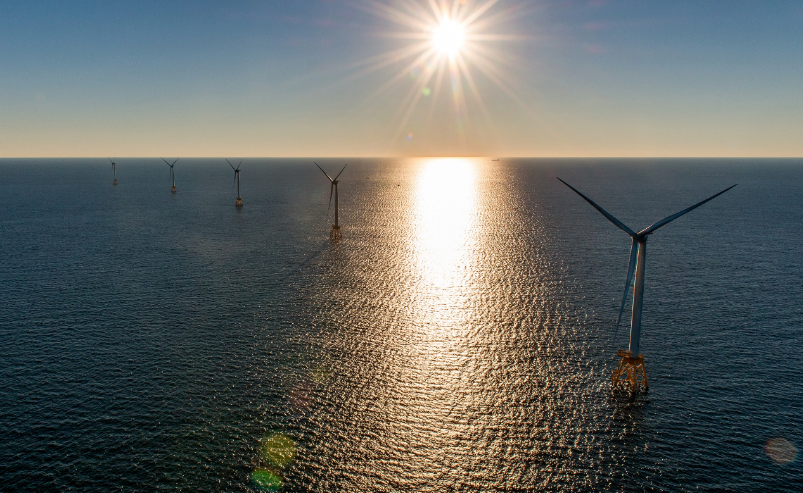I work every day to help improve how transportation gets people where they need to go, and I’m an optimist. Wait a minute – optimist? And transportation? In the same sentence? Did you just read that right?
Lately, it has been bad-news-day after bad-news-day for transportation in Massachusetts. Ongoing Red Line delays. Record-keeping nightmare at the RMV. Boston being ranked #1 for worst traffic in the country. The Union of Concerned Scientists’ report that quantifies the inequitable air pollution exposure from cars, trucks, and buses in communities of color in Massachusetts. How can one possibly be hopeful?
Despite these challenges and more, change is possible. We’ve seen it, recently, right here in Greater Boston. And it didn’t take decades and billions of dollars.
It took a small group of people getting creative with some paint and cones. And it made a difference for thousands of people. Three pilots tested these Bus Rapid Transit (BRT) elements along Massachusetts Ave in Arlington, Mt. Auburn Street in Cambridge and Watertown, and Broadway in Everett. Through experiments in 2018 and 2019, these cities and towns made buses faster and more reliable for over 30,000 people each day. Red paint and cones clearly identified designated lanes for buses. Some rubber IKEA-like pieces stacked on top of a sidewalk made stepping onto a bus much easier. Some traffic signals reprogrammed to optimize the number of people moving through some sticky intersections.
Based on MBTA data and other surveys, we found that the pilots improved peoples’ experience in a variety of ways:
Bus riders saved 5-10 minutes per trip. On Mass Ave in Arlington, people on morning buses bound for Alewife and Harvard Square saved up to 10 minutes each morning; riders on buses on Mt. Auburn Street saved five minutes, on average.
Buses were more reliable. Buses’ arrival times were closer to schedule. This meant bus riders had more predictable commutes and could plan for their day. Buses impacted by the pilot were 64% more reliable in Arlington (instead of 7 minutes, it was 2.5) and nearly 60% more reliable in Cambridge.
Waiting for the bus was a pleasant experience. Not only was the wait shorter and more predictable, it was also infused with beauty. A bus shelter in Everett came alive with thousands of flowers. A half-dozen shelters in Arlington were painted by local artists. Shelters in Cambridge were dressed with panels reminding riders that the lane was “dedicated to you.”
People on bikes and in cars liked the pilots too. Non-bus riders were surveyed to understand what they liked and didn’t like about the pilots. In Cambridge, 80% of survey respondents who biked felt that the street functioned better, and 94% of cyclists surveyed wanted the pilot changes to remain. The number of drivers reporting that they were satisfied or very satisfied with the way the street functioned increased by nearly 10 percentage points. In Arlington, 94% of surveyed bicyclists were very satisfied or satisfied with the pilot, and more than half of surveyed drivers said the bus lane should be made permanent.
So, are these types of projects more of what Massachusetts needs? Yes! These projects started as pilots. Yet nearly all of them have been made permanent already or will be later this year. Kudos to the municipalities that stepped up to the challenge, as well as Boston and Somerville (who are also investing in bus priority). And, to the MBTA and BostonBRT partners* for their essential roles in realizing these experiments.
Bus priority – and someday, Bus Rapid Transit, aren’t the only answers. We need other transportation projects too that move high volumes of people, safely, reliably, and that reduce our greenhouse gas emissions. These bus priority projects, quick to implement, also closely align with the first two recommendations from the 2018 Governor’s Future of Transportation Commission report: 1) prioritize public transit and 2) design roads to prioritize people-throughput, not vehicles. The report states that going forward, roadway owners must prioritize the movement of as many people as possible, regardless of modes. These projects are emblematic of these two recommendations, so much so that Governor Baker now calls himself “a big bus-lane guy.”
While these projects lessened the frustration of 30,000 people each day, they impacted fewer than 5% of all people that ride the MBTA. We’ve got a ways to go. But, we can do it. We have seen that change is possible. I’m optimistic that bus priority projects are going to continue to multiply, and that municipalities and other partners will continue to step up to support our public transit system in Greater Boston.
*In addition to Arlington, Cambridge, Everett, Watertown, and the MBTA, these BostonBRT partners helped make these pilots a success:
- Institute for Transportation and Development Policy
- LivableStreets Alliance
- Metropolitan Area Planning Council
- Stantec
- AdHoc Industries
- Denterlein
